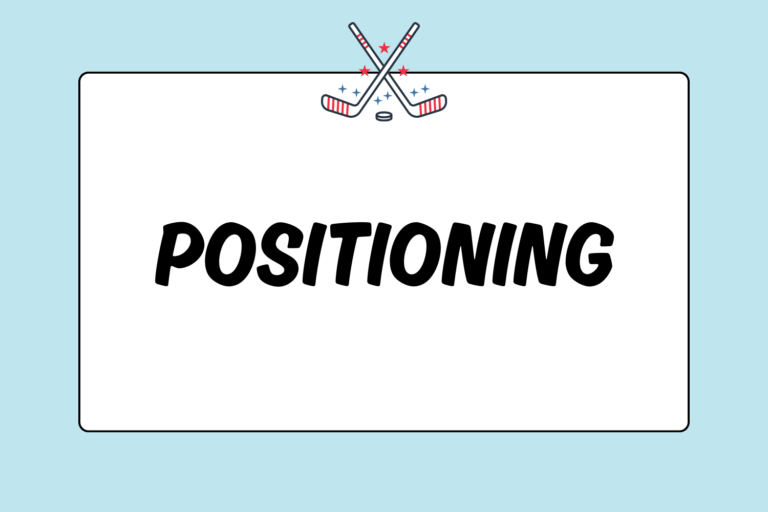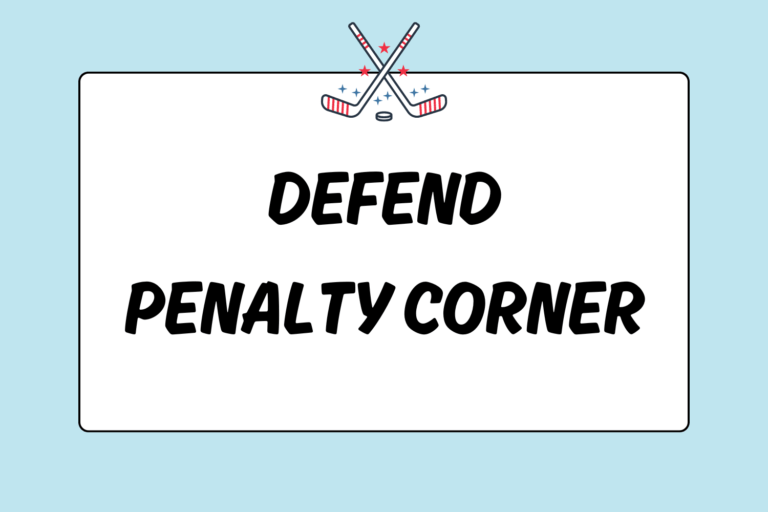Inside the shooting circle and neutral zone on the field, you will often find yourself marked by a defensive player — even when you don’t have the ball. In these circumstances, your main goal is to get into a position where you can receive the ball without risking it being intercepted or stolen.
One way to receive the ball while you are marked is to create space. You can create space by cutting — turning hard off your right or left foot to change directions — which will allow you enough time to receive a pass. Below are step-by-step instructions on field hockey’s most basic cuts:
- V-cut
- Back cut
- Loose visions: Behind cut
- Step-in-front cut
Make sure to couple these quick direction changes with short sprints and you’ll be open for anything.
V-cut
The v-cut is often used inside of the shooting circle to create space when you’re marked man-to-man:
- If a player is marking you, step in front of her and take a few steps towards the sideline. This will cause the defender to follow you, drawing her away from the middle of the field.
- Once she has committed, quickly cut back inside towards the middle of the field by pushing off of your outside foot and moving in front of her.
- Then, sprint to receive the ball on the run.
You can also receive the ball wide:
- Cut in front of the defender towards the middle of the field.
- Then, push off your outside foot and sprint wide into space to receive the pass. There are three ways you can make this cut:
- You can remain in front of her for the entire cut.
- You can cut from behind her to get ahead of her.
- Or, you can cut from in front of her to get behind her.
Once the cut is complete, it should look like a sideways “V.” By v-cutting, you create space to receive the ball, maintain your momentum, and clear a path to the goal.
Back Cut
The back cut is also used to create space inside the shooting circle. To perform the back cut:
- With your defender to your side (both of your backs to the goal), step back towards the goal. The defender will want to remain ball side and goal side to you, so you’ll draw her back to mark you.
- Once you’ve caused her to turn towards the goal, quickly turn and run forward, running around her and past the opposite side from where you started. So, if you were on her right side, you will cut back and sprint forward past her left side. When you cut back, you’ll follow the path of an upside down “V,” with your defender in the middle.
- Then, run past her and come towards the passer to receive the ball.
By using this type of cut, you cause the defender to lose sight of you. As you draw her towards the goal, you create an open space inside of the circle to receive the ball.
Hot Tip: Cut on Free Hits
On offensive free hits, you always want to be cutting in-and-out of the defense’s wall. Since the other team has time to set up its defense, you need to create space for your teammate to pass into.
Lose Vision: Behind Cut
This cut can be used anywhere on the field. As a defender is marking you side-to-side, quickly step behind her and towards her opposite shoulder. When the player turns to gauge sight of you, push off your outside foot to cut back to the original side. Then, sprint to receive the ball on the run.
You can also double back on this move. You will use the same basic principles listed above, but instead of cutting once, you will cut twice:
- Start by stepping behind your opponent and towards her opposite shoulder.
- When she looks back to find you, cut back to the original side.
- Then, cut once more back to the opposite shoulder and sprint into space to receive the ball. With this move, you’re defender won’t know which way to go!
Step-in-front Cut
This move is most often completed in the neutral zone because the defense is more likely to zonal mark.
- Start positioned behind your opponent.
- Signal to your teammate that you are ready to receive the pass.
- At the last second, sprint and cut in front of your opponent to block her path to the ball.
- Then, receive the ball while sprinting towards the passer.
After you receive the ball, you can either pass back to your teammate, turn and continue forward, or dribble in a new direction.
Why Create Space?
Passing the ball to a marked teammate is always a risk. If she receives the ball, she still has an opponent right next to her waiting to steal it. To reduce the chances of a turnover, create space if you’re awaiting a pass. That way, whoever is receiving the pass can maintain the momentum gained from the cut and move forward to the desired goal without immediate opposition.
So, remember to always be moving on the field and creating space with your basic cuts! This way, you will receive more passes and create more opportunities for advancements up the field!





